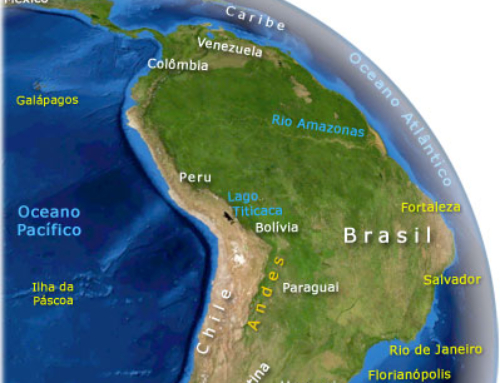In the decade of the 60ies, the 45 percent of the copper production was in US Company´s hands, being the largest producer and consumer and accounting for most of the output of the copper mines of South America (Copper Development Association, n.d.), in the last years the industry has changed.
Now Chile is the world´s major producer with more than 23 percent of share, but having a diversity of transnational companies in his territory. For example we find the largest copper producer: the Chilean state-owned Codelco, the biggest mine: Escondida from the Australian Anglo-Dutch company BHP Billiton, the third biggest copper producer: Collahuasi from the joint venture of the United Kingdom´s global mining company Xstrata, the British multinational mining company Anglo American and the Japanese multinational Mitsui. (Mbendi, 2011).
At the 80ies and 90ies Chile signed free trade agreements with the most important countries and regions and lowed practically to zero all the import and export duties and barriers, added to the Chilean security and stability political and economic reputation (Ball, 2010, p. 67-68) permitted to increase the stock of foreign direct investment (FDI) in almost 770 percent in the last 20 years, reaching the amount of $ 140 billion for 2010, the fourth place in Latin America and the Caribbean (Unctad, 2011).
These policies permitted the growth of the Chilean copper production in more than 460 percent in the last 15 years (Unctad, 2011) and according to the president of the Chile´s organization of private mining companies, SONAMI, in the next 6 years the FDI for new mining projects will be no less than $ 80 billion (Boyle, 2011), by large the most important source of resources for the country in the near future.
As we can see, this industry is concentrated in a few couple of companies that are multinational mining ones that have operations around the world and a local governmental company. We can explain this behavior by the Absolute Advantage Theory (Ball, 2010, p. 70) because exploiting and producing copper in Chile has unique advantages for the companies: high level of copper law, geographical concentrated resources, easy to exploit deposits, mines near the sea ports and relatively near clients, remember that the major buyers are the Asian Nations, in particular China (Boyle, 2011).
By the other hand, we can explain the international investments by the Monopolistic Theory, as we saw this industry is highly concentrated, with only a few amount of firms (Oligopoly). These foreign companies have advantages related with superior technology, access to financial capital and economies of scale.
With all this information everything looks like a “virtuous circle” and the international trade and investment theories add up perfectly. But there are some alerts for the future: these enormous projects require biggest amounts of energy to function, largest sources of water, and more that 60.000 new employees, between others. It doesn´t look like a problem, but think that all these projects are located in the middle of the desert or in the high mountain, where energy or water are not easy to find or produce them can imply large amounts of contamination and environmental damage. The location of people is another concern and can imply new camps with the corresponding impact.
In the past this was a typical governmental problem, but now the difference is that we are talking about large transnational companies that have big political influence, that make international lobby and can condition their investment to their convenience.
The question is, are the companies and the government prepared for these enormous amounts of FDI thinking in a small country like Chile?
Sources:
Ball, D. et al (2010). International Business: The Challenge of Global Competition (twelfth ed.). New York: McGraw-Hill
Boyle, D. (2011, December 21). Chilean copper production to increase in 2012. I love Chile. Retrieved on March 15, 2012 from http://ilovechile.cl/2011/12/21/copper-production-increase-2012/42673
Copper in the USA: Bright future glorious past (n.d.). Copper Development Association Inc. Retrieved on March 15, 2012 from http://www.copper.org/education/history/g_fact_industry.html
Copper Mining (2012). InfoMine. Retrieved on March 14, 2012 from http://www.infomine.com/commodities/copper.asp
Copper Mining in Chile (2011). Mbendi. Retrieved on March 15, 2012 from http://www.mbendi.com/indy/ming/cppr/sa/cl/p0005.htm
World investment report (2011). United Nations Conference on Trade and Development, UNCTAD. Retrieved on March 14, 2012 from http://www.unctad.org/en/docs/wir2011_en.pdf






Leave A Comment